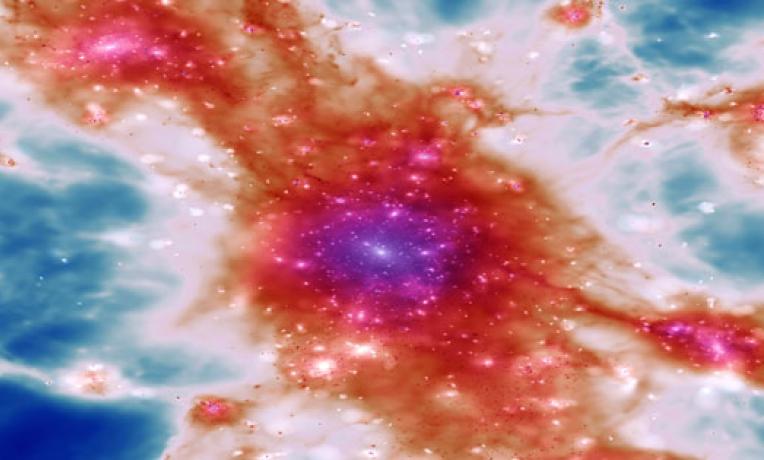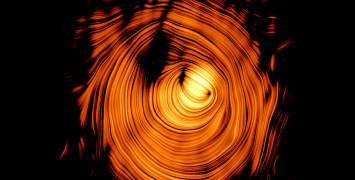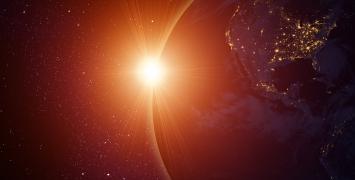The cosmic threat that binds our universe
There is a web of filaments – essentially long strands of gas – that connects all the galaxies in the universe. This is known as the Cosmic Web and, so far, astrophysicist had only a partial idea of what it may have looked like. Now, ERC funded astronomer Michele Fumagalli, and his collaborators from the University of Durham and the RIKEN Cluster for Pioneering Research in Japan, are able to show the stunning images of this common thread that runs through our stars.

The beautiful maps of the Cosmic Web, illustrate an important point. They show that the filaments provide the fuel for the intense formation of stars and black holes within a very massive cluster of galaxies beginning to assemble in the early universe, around 12 billion years ago.
This is the first time that the filaments in this structure have been imaged in such detail on large scales connecting several galaxies. The research, involving Durham University, UK and the RIKEN Cluster for Pioneering Research, in Japan, is published in the journal Science.
Watching this video you are accepting Youtube cookies policy
The scientists found evidence for multiple filaments that extend for distances over more than three million light years. The region where these enormous filaments meet is home to an exceptional number of supermassive black holes and “starbursting” galaxies with very active star formation.
According to current theories of galaxy formation, such intense activity can only be triggered and sustained over time if large amounts of gas are funnelled into the assembling cluster from the surrounding regions. In line with this, the group found that the detected filaments contained a significant reservoir of gas, which will help to fuel the continued growth of galaxies in this region.
Watching this video you are accepting Youtube cookies policy
These results indicate that the Cosmic Web, which is thought to consist primarily of cold dark matter and some ordinary matter, forms the scaffolding of the cosmos, providing the framework for galaxies and clusters to form and evolve.
In the past few decades, astronomers have detected the threadlike structure of the Cosmic Web in the large-scale distribution of galaxies and found hints that diffuse gas is arranged in a similar way.
“It is very exciting to clearly see for the first time multiple and extended filaments of gas connecting galaxies in the early universe.” says Professor Fumagalli “We finally have a way to map this cosmic web directly, and to understand in detail its role in regulating the formation of supermassive black holes and galaxies.”
Biography
Michele Fumagalli is Professor in the Centre for Extragalactic Astronomy and Institute for Computational Cosmology at Durham University, UK. After a PhD at the University of California, Santa Cruz, USA, he held a NASA Hubble Fellowship and a Spitzer Fellowship at Carnegie Observatories and Princeton University, USA. His research focuses on the formation and evolution of galaxies in relation to their gas environment using observations from the largest telescopes and cosmological simulations.






